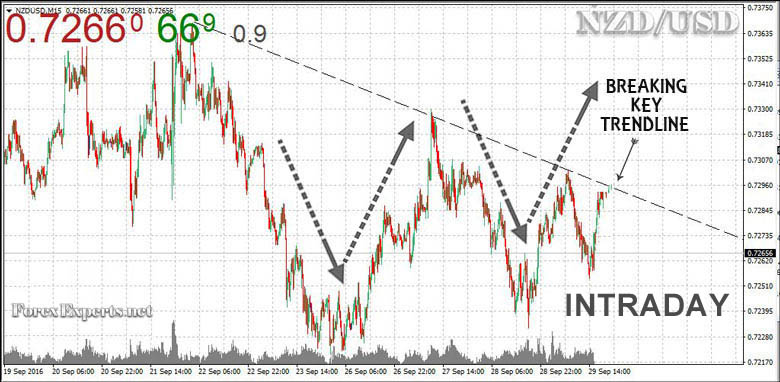♞ Contracts for Difference (CFDs) and Trading Strategies
The best trading strategy is the one that matches your individual risk tolerance and available time.

What are CFDs?
CFDs provide a simple and efficient way to trade global financial markets, including Forex, equities, cryptocurrencies, and commodities. A CFD contract mirrors the price movements of an underlying asset, allowing investors to trade in both directions.
Categories of CFD Trading Strategies
Many people expect there to be a single best trading strategy that guarantees success for everyone. However, that’s not true—the best strategy is the one that fits your individual risk profile. There are dozens of different CFD trading strategies designed to suit all kinds of risk tolerances.
Main categories of CFD Trading Strategies:
-
Automated-Trade Strategies {» More about automated Forex trading}
-
News-Trading Strategies
-
Hedging Strategies
-
Zone-Trading Strategies
-
Pairs-Trading Strategies
-
Position-Trading Strategies
-
Carry-Trading Strategies {» A Dedicated website to Carry Trading}
-
Long-Term Trading Strategies
-
Dividend-Stripping Trading Strategies
📌 Basic Steps for Successful Trading
Formulating Successful Strategies – The Concept of Successful Trading
Several key factors determine the suitability of a trading strategy for a particular investor profile:
(i) Years of experience, especially with margin trading
(ii) Specialization in a specific asset class (currencies, equities, metals, crypto, etc.)
(iii) Time available for full implementation of a trading strategy (very important)
(iv) Risk profile (how much loss a trader can afford)
(v) Ability to make tough decisions during volatile market conditions
Here are some basic steps:
(1) Define your trading profile based on the five variables listed above (i to v)
(2) Test various trading strategies and focus on those that align with your risk profile
(3) Find a broker offering the best trading terms for your chosen strategy (see below for more on this)
(4) Start with a Demo Account to evaluate the performance of different strategies
(5) If satisfied with the results, open a Real Account and begin trading micro-lots (1 lot = $1,000)
(6) If results remain satisfactory, move on to trading standard lots (1 lot = $100,000)
Selecting a CFD broker according to your trading strategy
Pay close attention to the trading spreads and overnight financing costs (SWAP rates) you will incur.
(i) If you plan to use a scalping or other intraday strategy, you need the tightest spreads possible.
(ii) If you intend to pursue a long-term or carry trading strategy, seek the best SWAP rates for that specific asset. Overnight financing charges for holding a position can be positive with one broker and negative with another.
Compare Brokers: https://forexexperts.net/index.php/compare-zone/compare-forex-brokers
Trading promotions
CFD brokers often offer attractive promotions when opening a new account. These promotions can help support the implementation of your trading strategy. If your strategy is expected to generate high volumes (such as scalping, intraday, or similar approaches), joining a rebate plan is essential. A rebate plan can significantly reduce your trading costs. It is free to join and can make a real difference over time.
♛ Three Popular CFD Trading Strategies
(1) Scalping CFD Trading Strategy
Scalping is the most active trading style and is suitable only for very experienced traders.
□ Timeframe: One to a few minutes
□ Risk Level: Very high
□ Asset Classes: Forex majors (highly liquid with tight spreads), major indices
□ Trading Leverage: 30:1
□ Charts: M1, M5
□ Technical Analysis: RSI, ATR, Bollinger Bands, chart patterns, candlestick formations
□ Trading Orders: Stop-loss, trailing stops
Introduction to the Scalping Strategy
Scalping relies mostly on technical analysis and aims to capitalize on key price breakouts and significant retracements. Scalpers seek small, consistent profits by cutting losses quickly. This approach is highly risky and not suitable for all traders. Scalping tends to be profitable only for advanced and professional traders, and definitely not for beginners. Most scalpers focus on the Forex market, where liquidity is high and bid-ask spreads are very tight.
Requirements
Basic requirements for a scalping strategy include:
-
Trade only assets with very tight spreads to minimize trading costs (e.g., EUR/USD, GBP/USD, USD/JPY)
-
Use strict money management by limiting leverage
-
Trade only high reward/risk positions (3:1 or higher)
-
Apply rules to limit intraday losses (e.g., stop trading after 3 consecutive losses)
-
Take advantage of a rebate plan if your broker offers one
Scalping requires a trading account with a competitive online broker offering:
-
Very tight spreads
-
Fast order execution
-
No re-quotes / low slippage
-
Permission to place stop-loss orders close to the trade’s opening price
Technical Analysis
Technical analysis for scalping mainly involves identifying support and resistance levels. Indicators such as Bollinger Bands, ATR, RSI, and divergences between RSI and price charts are also useful.
Example: The RSI(21) Scalping Strategy
This simple scalping strategy uses:
-
RSI(21) on the M5 chart
-
Chart patterns and Japanese candlestick formations
First, open multiple currency pairs on your MT4 platform to have options.
-
Apply RSI(21) to the M5 chart.
-
Go long when RSI(21) reaches -70 and then crosses back above -70.
-
Go short when RSI(21) reaches +70 and then crosses back below +70.
-
Confirm entries with chart patterns and candlestick formations.
-
Use recent highs/lows to place stop-loss orders.
-
Use a trailing take-profit order to maximize profits.
Chart: Examples of long trades applying the RSI(21) scalping strategy on the M5 timeframe.

Creating an Automatic Alert System to Scalp Forex
Scalping Forex requires a significant amount of spare time daily to monitor and capitalize on market opportunities. Using an Automatic Alert System on MT4 can save you tens of hours each week. You don’t need programming skills to create an alert system, as there are free builders available online. One of the best web apps is called EA Builder, which is free for creating indicators:
-
Free for indicators / paid for building EAs
-
Create indicators for MT4, MT5, and TradeStation
-
Easy to create even complex indicators through a graphical interface
-
Receive alerts via email, SMS, and on-screen notifications
» Visit the EA-Builder (Free for Creating MT4 Indicators)
Scalping Strategy Pros and Cons
Here are the basic advantages and disadvantages of implementing a scalping strategy:
(↑) Advantages
√ Potential for high returns (requires discipline and strong money management)
√ No interest charges (no SWAP rates)
√ Limited loss potential per position due to tight stop-loss orders
√ Ability to convert a manual strategy into an automated one
(↓) Disadvantages
x Only suitable for trading highly liquid assets
x Extremely risky
x Not recommended for beginners or semi-advanced traders
x High trading costs due to frequent transactions
» More about scalping the global markets on ForexExperts
(2) Intraday CFDs Trading Strategy
Intraday trading involves capitalizing on strong price movements within a single day and closing all positions before the market closes.
□ Timeframe: from a few minutes up to a few hours
□ Risk Level: High
□ Asset Classes: All, but tight spreads are essential
□ Trading Leverage: 5:1 to 30:1
□ Charts: M5, M30, H1
□ Technical Analysis: Wave Theory (Highs & Lows), RSI (14), ATR, Chart Patterns, Japanese Candlesticks, Support & Resistance, Daily Pivots
□ Trading Orders: Pending Orders, Stop-Loss, Take-Profit, Trailing Stop
Intraday trading is risky and not suitable for all traders, especially beginners. It requires a highly competitive broker and solid knowledge of position sizing. CFDs can be an effective tool for intraday trading.
Basic Requirements for Successfully Applying an Intraday Strategy:
1 - Tight spreads and no re-quotes
2 - Fast execution with no delays
3 - Strong trading discipline
4 - Good understanding of position sizing
5 - Effective money management
Four Main Categories of Intraday Strategies:
(1) Trend Riding
This strategy involves following the trend by using highs and lows, holding positions until hitting take-profit or stop-loss levels. Tools like Wave Theory, chart patterns, and candlestick formations help identify trend continuation. Other technical analysis tools can also be used.
(2) Price Breakouts
With this strategy, you buy or sell immediately when the price breaks a key level. Tools such as Support & Resistance, trendlines, and chart patterns assist in identifying breakouts. Keys to success include:
(i) Avoid trading without clear market direction signals
(ii) Use pending orders when possible to optimize entries and save time
(iii) Confirm breakouts with volume analysis, as volume should support price moves according to Wyckoff
Chart example: Going long on NZD/USD after breaching a key resistance trendline

(3) Price Reversals
Trading price reversals is not as easy as it may appear. Most of the time, the market continues in the same direction without reversing. Therefore, your trades must have an excellent reward-to-risk ratio to be consistently successful. The minimum recommended ratio is 3:1, but we suggest aiming for 6:1, using trailing stops.
(4) News-Trading
News-trading involves executing trades based on key economic releases using an economic calendar. It requires a true ECN broker with ultra-fast execution and high-performance PC technology. Be aware that many brokers engage in stop-hunting during news events, which means your stop-loss should allow for wider margins.
Technical Analysis
- Trend Riding
The wave theory (Highs & Lows), chart patterns, candlestick formations, daily pivots, and several other tools.
- Price Breakouts
Breaking key support or resistance levels, breaking key trendlines (see chart), MACD signals on M30 and H1 charts. Also, watch for divergences between the MACD histogram slope and the price chart slope. Keep an eye on RSI (14) on the M5 chart.
- Price Reversals
MACD signals on M30 and H1 charts. Divergences between the MACD histogram slope and the price chart slope. Also, watch for potential divergences between the RSI slope and the price chart slope. Chart patterns and candlestick formations are important. More advanced traders may also use the Fibonacci retracement tool and harmonic patterns to confirm potential reversals.
Intraday Strategies Pros & Cons
These are the main advantages and disadvantages of intraday trading:
(↑) Intraday Strategy Advantages
√ High-volume trading (taking advantage of Rebate Plans)
√ No overnight financing (Swap charges)
√ Great variety of intraday strategies
√ Can avoid news releases
(↓) Intraday Strategy Disadvantages
x High-risk trading
x Paying high trading costs
x Requires a lot of spare time
(3) Swing Trading CFDs Strategy
Swing trading aims to capitalize on strong mid-term trends and the smaller price swings that occur within those trends.
□ Timeframe: a few days to a couple of weeks
□ Risk Level: Medium
□ Asset Classes: All asset classes
□ Trading Leverage: 3:1 to 10:1
□ Charts: H4, D1
□ Technical Analysis: MACD, RSI (21), Highs & Lows, Weekly Pivots, Chart Patterns, Fibonacci Retracement, Harmonic Patterns
□ Trading Orders: Profit Target Zones / Trailing Stop-Loss
Swing Trading Strategy
Swing trading is one of the most effective strategies in trading. The objective is to buy during dips in mid-term uptrends or sell during rallies in mid-term downtrends. It's essential to let your profits run while cutting your losses quickly
Chart: Trading the EURGBP Swings on H4

Swing trading aims to take advantage of small price reversals (also known as 'price swings') that occur within mid-term trends. Any mid-term trend typically includes brief periods of correction, which may appear as either price consolidations or retracements. Swing trading is based on the assumption that, after a small correction, the existing trend is more likely to continue than to reverse. Swing traders use a combination of profit target zones and trailing stop orders to manage their positions.
Technical Analysis
The technical analysis used in swing trading incorporates a variety of tools. This includes MACD signals on H1 and H4 charts, along with divergences between the MACD histogram slope and the price chart slope. Monitoring highs and lows on H1 and H4 charts is essential. Also, watch the RSI on the D1 chart, including potential divergences between the RSI and the price chart slope. Chart patterns are valuable across all timeframes. Weekly pivots can also be used. More advanced swing traders may apply the Fibonacci retracement tool and harmonic patterns to optimize their entries and exits.
» The free indicator RSI Precision for Swing Trading
The main advantage of the swing trading strategy is that mid-term trends are often easy to identify. The main disadvantage is that you need to allow considerable room for your stop-loss, which can affect the reward-to-risk ratio.
Swing Trading Pros and Cons
These are the pros and cons of the swing trading strategy:
(↑) Swing Trading Advantages
√ One of the most effective trading strategies
√ It can be used in any Financial Market (Forex, Indices, Shares, and Commodities)
√ Doesn't require a lot of time, for monitoring your trades
√ It is easy to identify mid-term trends
√ Can help traders to find and take advantage of high Reward/Risk trades
√ Avoid the annoying intraday market noise
(↓) Swing Trading Disadvantages
x It is often difficult to identify the right time to enter the market
x You are exposed to several news releases (avoid them if you can)
x You are exposed to overnight financing (Tip: use CFDs on Futures to avoid paying overnight fees)
■ CFD Strategy -Trading Strategies using Contracts for Difference (CFDs)
ForexExperts.net
| 🔗 READ MORE | » Introduction to Trading Strategies | |||
| ♞ DAY-TRADE STRATEGIES | » Falsebreak Candle | » Bollinger-RSI | » Stochastic Day-Trade | » Breakout Strategy |
| ♚ SWING-TRADE STRATEGIES | » Riding the Trend | » Moving Envelopes | » MACD Swing | |
| ♜ SCALPING STRATEGIES | » Stochastic Scalper | » Bollinger-RSI Scalping | » Hit-Run Trading | |
| ♟ STRATEGIES FOR BEGINNERS | » News-Trading | » Follow-The-Trend | » Support and Resistance | » Fibonacci Retracements |
| » Stochastics Trading | » Chart Patterns | |||
| 💱 MARKET CORRELATIONS | » US Yields and USDCHF | » Crude Oil and Forex | » USDJPY and US Stock Indices | » AUD and Gold Price Correlation |









